#Hurufiyya movement
Explore tagged Tumblr posts
Text
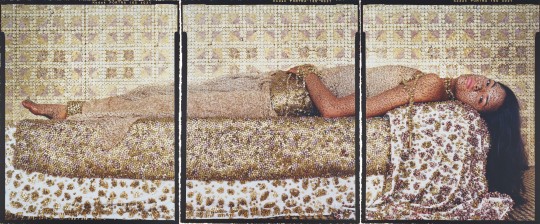
Bullets Revisited #3, Lalla Essaydi, 2012
#photography#lalla essaydi#contemporary art#women artists#female artists#hurufiyya movement#african art#2010s#2012#triptych#moroccan
18 notes
·
View notes
Text
GHADA AMER
1963-presente
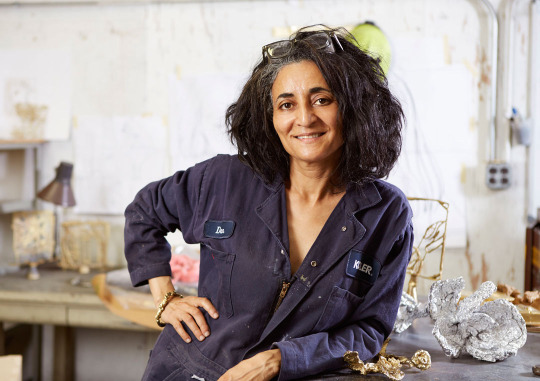
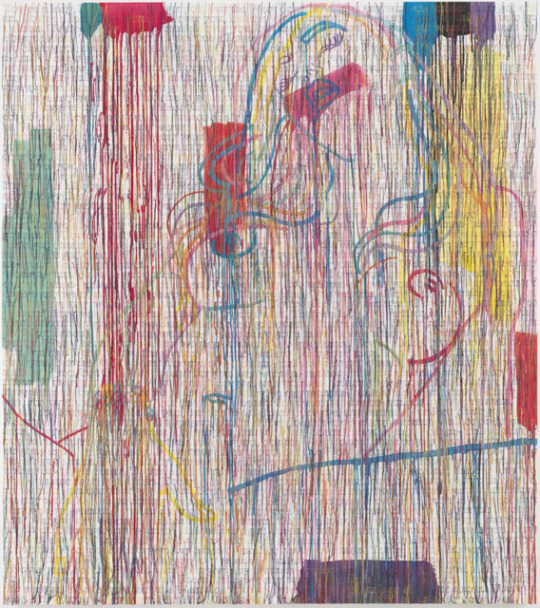
You Are A Lady, 2015
Acrylic and embroidery on canvas
182.9 × 162.9 cm

The Heart, 2012
Stainless Steel
85.7 × 107.3 × 83.8 cm
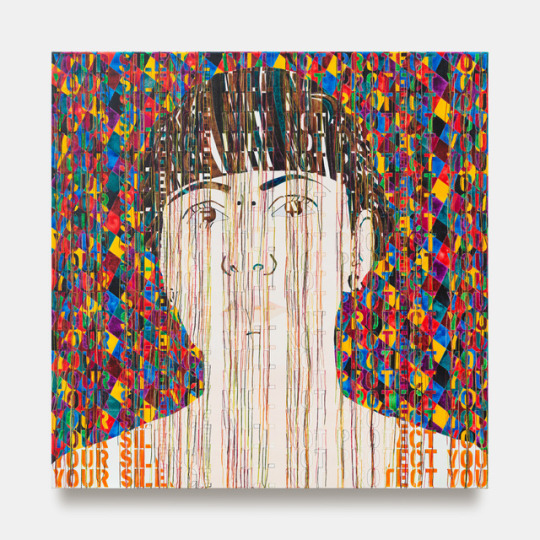
Portrait of Sindy, 2020
Acrylic, embroidery and gel medium on canvas
122 × 122 cm
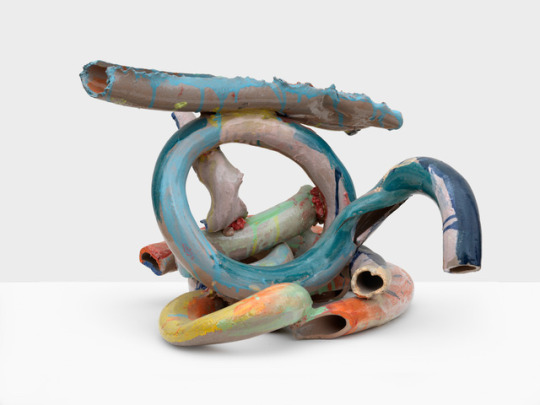
The Fountain, 2019
Glazed ceramic
41.5 × 52 × 61 cm
#g#pintura#acrilico#Egipto#dibujo#print#embroidery#escultura#instalacion#hurufiyya movement#institut des hautes études en arts plastiques#villa arson#ghada amer
9 notes
·
View notes
Photo
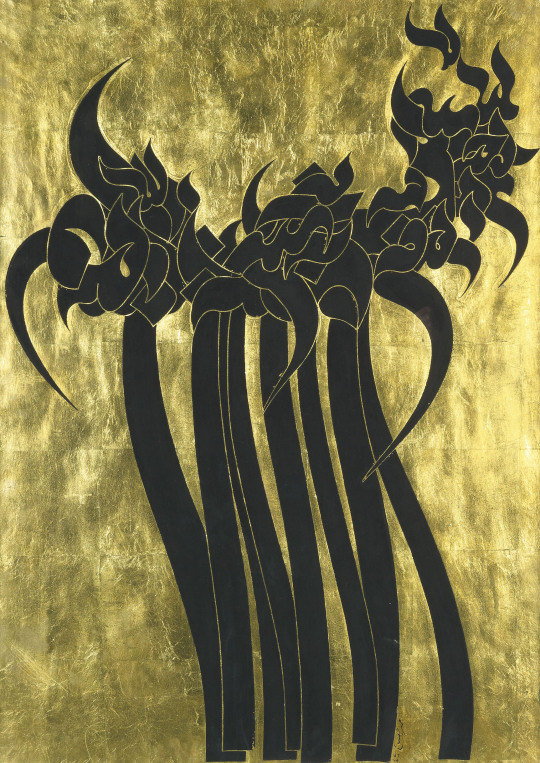
Daffodils, Mohammed Ehsai, 1989
Acrylic and gold leaf on thick paper 40 ⅛ x 27 ¾ in. (102 x 70.4 cm)
#art#painting#mohammed ehsai#1980s#acrylic#gold#iranian#hurufiyya movement#middle eastern art#contemporary art#flowers#100 notes
135 notes
·
View notes
Text
AMER, GHADA
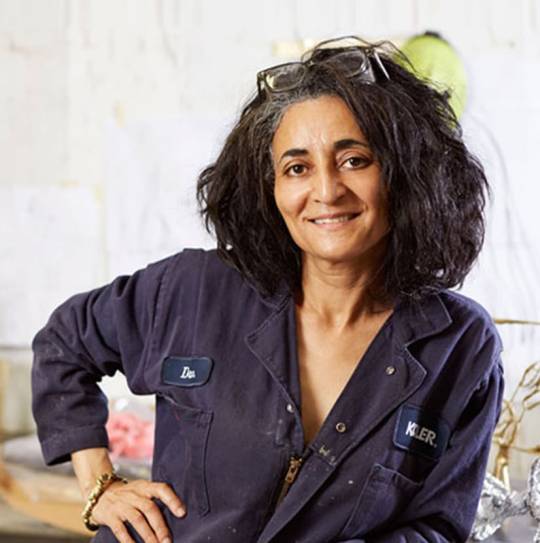
Ghada Amer es una artista plástica, afincada en Nueva York. Sus obras son principalmente pinturas bordadas realizadas desde la perspectiva de un trabajo tradicional de la mujer, como es la costura, con el que ella denuncia los roles y los estereotipos.
Nacimiento: 1963 (edad 58 años), El Cairo, Egipto
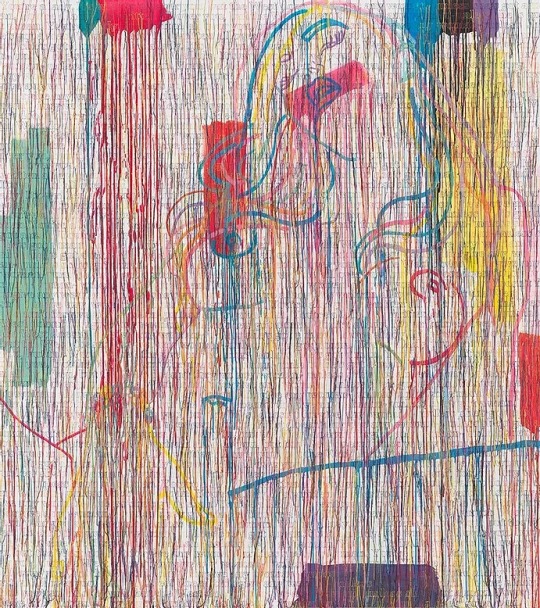
You Are A Lady, 2015, acrylic and embroidery on cambas, 72x64 in.
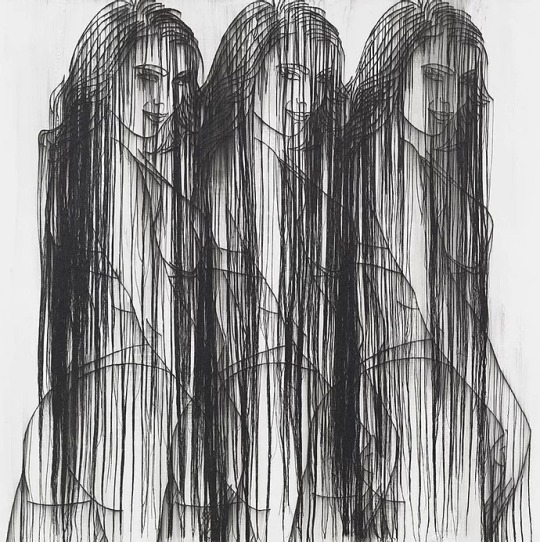
Hend, 2017, acrylic, embroidery and gel.
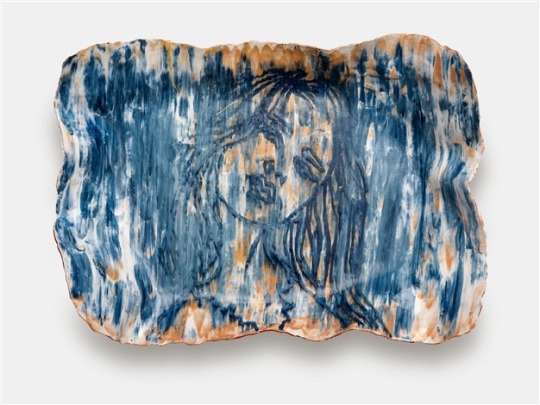
Chantal, 2018
Sculpture, Ceramic
90 x 125 x 26 cm. (35.4 x 49.2 x 10.2 in.)
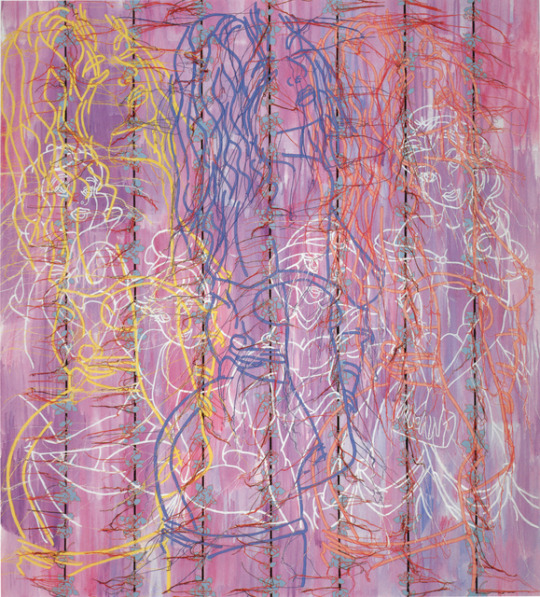
Princesses, 2005
71 9/10 × 64 in
182.5 × 162.5 cm
https://www.ghadaamer.com
#A#AMER#GHADA#plastic artist#nueva york#Barjeel Art Foundation#Hurufiyya movement#Egypt artist#contemporary artist#beca fundación pollock krasner#premio UNESCO#UNESCO PRIZE#biennaledivenezia#visual artist#neoexpresionismo#biennal whitney#centro pompidou#bienal de Sidney
2 notes
·
View notes
Photo
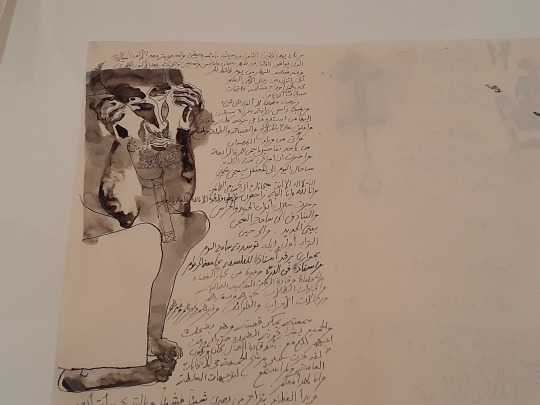
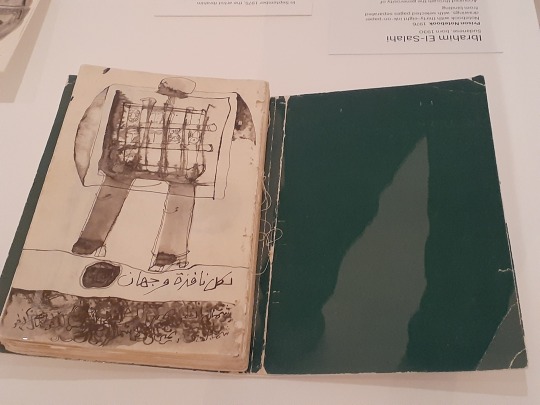
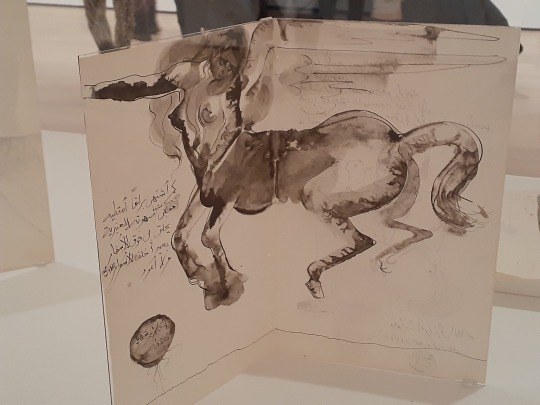
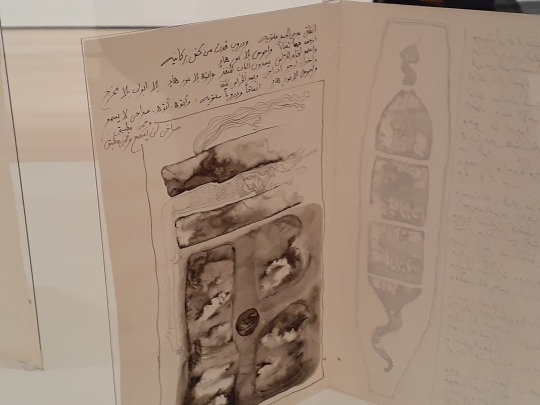
Ibrahim El-Salahi, Sudanese, born 1930 @ #MOMA
Prison Notebooks, 1976
Notebooks with thirty-eight ink-on-paper drawings with selected pages separated from binding.
#Ibrahim El-Salahi#art#Sudan#Sudanese artists#painters#politicians#diplomats#NYC#hurufiyya art movement#traditional graphic forms#calligraphy#Arab identity#contemporary artworks#khartoum#Crystalist group#transparency#dualism#moma#museums
2 notes
·
View notes
Quote
The Hurufiyya movement (Arabic: حروفية hurufiyya, adjective form hurufi literal meaning "letters" [of the alphabet]) was an aesthetic movement that emerged in the late twentieth century amongst Arabian and North African artists, who used their understanding of traditional Islamic calligraphy, within the precepts of modern art. By combining tradition and modernity, these artists worked towards developing a Pan-Arab visual language, which instilled a sense of national identity in their respective nation states, at a time when many of these states where shaking off colonial rule and asserting their independence. They adopted the same name as the Hurufi, an approach of Sufism which emerged in the late 14th–early 15th century. Art historian, Dagher, has described hurufiyya as the most important movement to emerge in the Arab art world in the 20th-century.
Wikipedia
#quote#art#art movement#Hurufiyya#Sufism#Arabic#art theory#design#Arab world#Sufi#art history#Arab art#language
40 notes
·
View notes
Text
Arabic Calligraffiti a fusion of classical and modern art.
Arabic Calligraphy is an ancient classical art originated from the East, Whereas graffiti which means scribbling is a form of street art. Arabic Calligraffiti is a beautiful fusion of Classical & Street art. Its a combination of Arabic calligraphy, typography, and graffiti. While Calligraphy follows rules and is a meaningful art, calligraffiti may or may not have any meaning. To be a calligraffiti artist you don't have to be a perfectionist in calligraphy, even if you don't follow the traditional rules you can still create something that's impactful and makes a difference. Some artists have described calligraffiti as a Distinct style of the School of Calligraphy art and a part of the Hurufiyya movement. Some of the pioneers and well-known artists who have contributed to Arabic calligraffiti are Hassan Massoudy an Iraqi painter and world-known calligrapher who has had a major influence on calligraffiti artist worldwide, Hossein Zenderoudi, Khadiga elghawas, Ahmed Moustafa, A1one A.k.a Tanha who is an Iranian revolutionary artist who has been in prison few times for his Street art activism, El seed, Ayad Alkadh, Yazan Halwani from the infamous streets of Lebanon, Abdulrahman Al-Nugamsh from Saudi Arabia, Inkman, Karim Jabbari, Dose ok and many more. Read the full article
1 note
·
View note
Text
Ghada Amer
Ghada Amer es una artista plástica, afincada en Nueva York. Sus obras son principalmente pinturas bordadas realizadas desde la perspectiva de un trabajo tradicional de la mujer, como es la costura, con el que ella denuncia los roles y los estereotipos. Fecha de nacimiento: 1963 (edad 57 años), El Cairo, Egipto Obras de arte: Snow White without the Dwarves En exhibición: Barjeel Art Foundation Período: Hurufiyya movement Educación: Villa Arson Conocidos por: Pintura, Dibujo, Escultura, Instalación, Performance



3 notes
·
View notes
Text
Week 5 Summary
This week I finished designing all the promotional Instagram posts and began uploading them.

Next, I will work on the story designs and announcement posts of first meeting
I contacted Two venues in Riyadh for the meeting and am still in conversation with them

I finalized the Topic for the first meeting and chose it to be abstract art, as it is very open for interpretation but still holds interesting stories and introductions into multiple phenomena within Modern Arab Art. As I began choosing the artworks, the questions and subtopics flowed organically.
For example, talking about Dia Azzawi's work naturally leads to a conversation surrounding exile.

While talking about Omar El Nagdi's work introduces Hurufiyya as a movement.

In Addition to what I previously mentioned, the next steps are working on the midterm presentation and the zine content and design.

3 notes
·
View notes
Text
0 notes
Photo
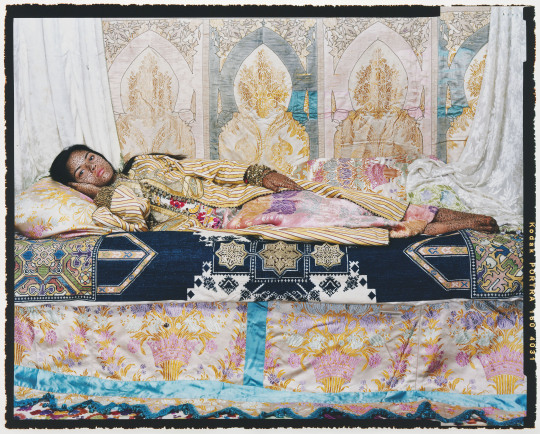
Harem Revisited #33, Lalla Essaydi, 2012
#photography#lalla essaydi#2010s#color photography#moroccan#female artists#hurufiyya movement#women artists
31 notes
·
View notes
Text
Artists that worked in Isolation part 2
Just like last time, in this blog I will talk again about 2 artists that worked in isolation and came out with amazing outcomes.
Ibrahim El-Salahi
Ibrahim El-Salahi (born 5 September 1930) is a Sudanese painter, former politician, and diplomat. He is one of the foremost exponents of the hurufiyya art movement, which sought to combine traditional graphic forms, especially calligraphy, into contemporary artworks with a distinct Arab identity, in the late 20th-century.
The Inevitable
1985, Germany


Just like another artist from the last post, Ibrahim also had to face isolation in prison in mid 1970′s. Since the prison didn’t allow such activities as art, he had to be very sneaky with his ways. He would scribble plans for future works on the back of cement pavings and then bury them in the sand whenever a guard would come by. This whole method of his actually led to the creation of “The Inevitable” The surrealistic painting was done in detail and great technique by the experienced artist. His work only came out finished later in 1985 but the results of his hard work and sneaky ways in prison sure are some pretty ones.
The painting is definitely really detailed and worked on with an incredible amount of patience and care. Ibrahim states that the message of his work is people standing against the evil, the society, the ones that corrupt and want to steal us from our reality. Looking at the picture indeed it is quite complicated to make out stuff due to the use of lots of shapes and details but if you take your time and try to look from Ibrahim’s perspective you can make out silhouettes raising their hands to the sky, almost like in a fighting position, like they are ready to fight those that rob them of their freedom. There’s lots of sharp shapes, straight lines but they all seem to be oriented to the sky. All the weapons and corners and whites they are all reaching up, all ready for that war.
Ibrahim managed to work in a style that not any artist can tackle. Surrealism is one interesting area but if not done the right way, it loses all of its spark. It’s not always about drawing skills but ways in which you send messages and thinking of how to put everything together on a canvas using your imagination aswell. A surrealistic painting even if done with major drawing skill, if it’s meaningless of a message, of an understanding, then the whole thing itself is empty, just a shell of something that looks good but tells nothing. But Ibrahim made sure to work in such a technique where not only his drawing looks flawless but the message behind the image is also sent in a really sensible, abstract sort of way. The monochromatic choice also adds to the impact and quite good contrast between the white blank spaces fading out between the painted areas like a sort of ink being diluted into a lake. His ink does have a strong sense, it’s opaque but it can also fade in a way that he can go from really soft lines and spots, to something harsh and dark meant to stand out.
The fact that Ibrahim went through all the pain starting from when he was in the prison just to create this amazing piece is completely admirable. Not only was he able to memorise every bit that he sketched out whenever he found some safe time alone, but he also risked his life by doing it in the first place. But it was done so well with such dexterity that no one ever caught him and he successfully has taken his planned work to the very end.
Alfred Wallis
Alfred Wallis (18 August 1855 – 29 August 1942) was a Cornish fisherman and artist.


Out of all the artists I have reviewed until now, this one has a slightly different type of isolation going on. Alfred decided by himself to live in self-isolation in his home from St Ives. He did all of his paintings from memory, not using some actual reference or painting some sort of view. While this choice of secluding himself from others might help with more time allocated to art and imagination, on the other hand there are also other various inconveniences. For one, Wallis was pretty broke not having a job and being always by himself so his working media was severely cut off as he had to paint of bits of cardboard that he would rip off from boxes and also limited his colour palette as to not use too much paint.
The paintings themselves say a lot about Alfred and mainly the fact that it can be noticed they were done from memory. They all have this sort of “amateur” look to it, like most paintings kids have done and that is because he was missing any type of reference or image to work after. All of his paintings seem 2d, they do not variate in shapes and depth and objects aswell as house and boats seem to be one sided shapes seen from a really odd perspective. That is mainly what happens when artists are lacking reference and study on certain stuff. You first need to understand how perspective and certain objects and anatomy works so then you can draw it yourself. But he was in his house, away from places where he could look at something and see the exact structure and how it overlays with the background and the other elements. You can easily tell he was drawing it all from his mind since elements seem to not have depth, they all have the same size or look odd when put next to eachother overall making everything oddly static and kid-like.
But overall this can inspire any person stuck at home right now to try out painting. He’s done it without any research at hand whatsoever which means that basically everyone can give it a go and enjoy it in their own ways. I encourage everyone to have fun and experiment and even though it does not look perfect, enjoy the process and the fact it was done by you with your hand and mind. Letting our imagination run free can bring lots of wonderful things and creations no matter who or what we are good at.
0 notes
Photo

Midoum 4, Nja Mahdaoui, 2002-07
Gold and silver ink, China ink, and acrylic on linen canvas 58 ⅞ x 59 ¼ in. (149.7 x 150.4 cm)
#art#painting#nja mahdaoui#tunisian#african art#muslim#calligraphy#hurufiyya movement#contemporary art#2000s
35 notes
·
View notes
Photo
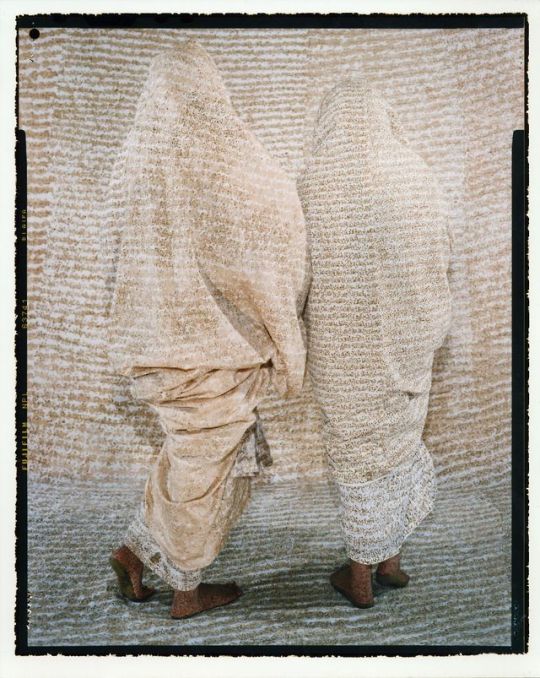
Converging Territories #3, Lalla Essaydi, 2003
Chromogenic print Edwynn Houk Gallery, New York City, New York, USA
#photography#lalla essaydi#2000s#moroccan#chromogenic print#color photography#islamic art#female artists#hurufiyya movement#contemporary art#women artists
62 notes
·
View notes
Photo
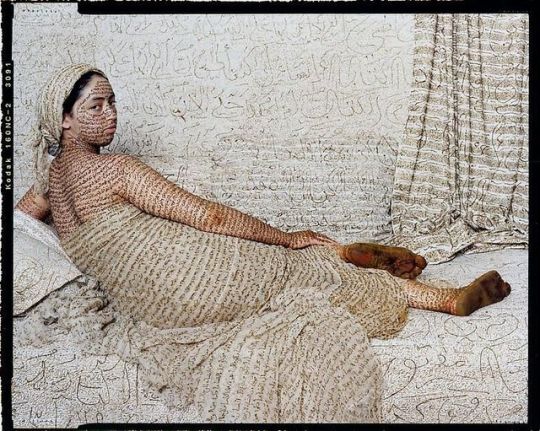
Les Femmes du Maroc: La Grande Odalisque, Lalla Essaydi, 2008
Chromogenic print Edwynn Houk Gallery, New York City, New York, USA
#photography#lalla essaydi#2000s#moroccan#female artists#hurufiyya movement#contemporary art#islamic art#color photography#women artists
39 notes
·
View notes
Photo
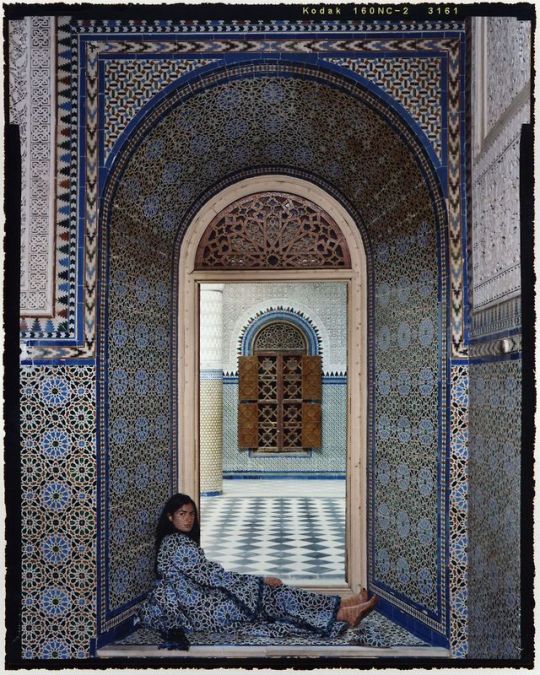
Harem #14C, Lalla Essaydi, 2009
#photography#lalla essaydi#2000s#moroccan#female artists#contemporary art#hurufiyya movement#color photography#women artists#2009
93 notes
·
View notes